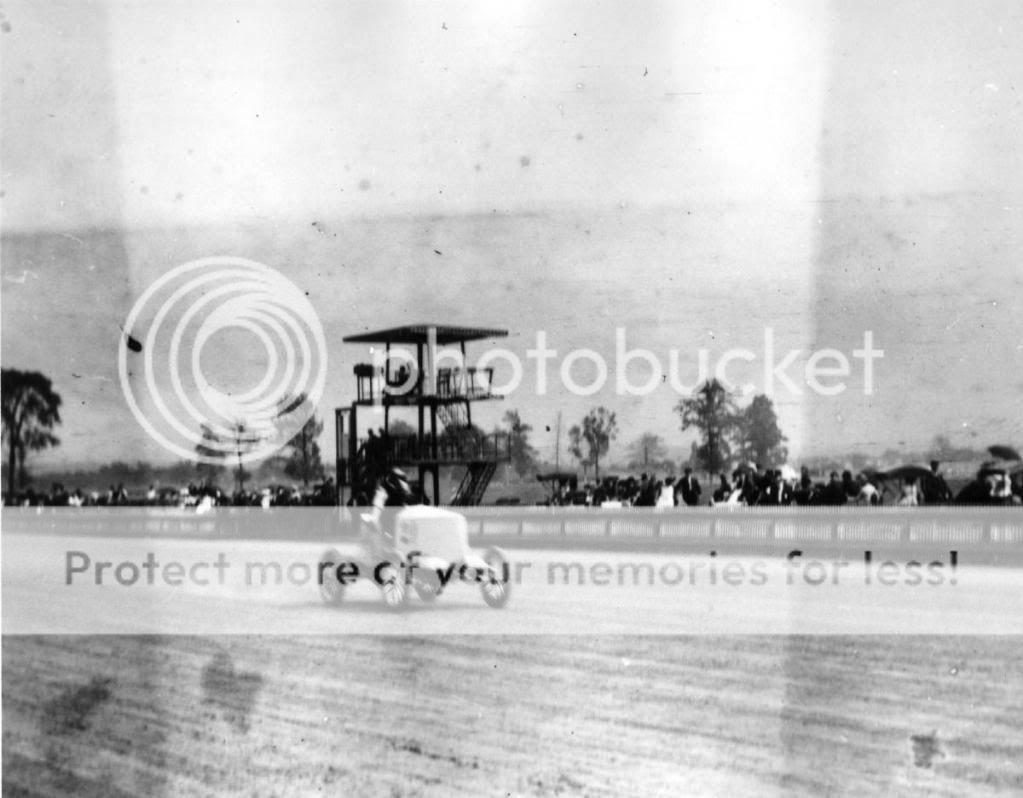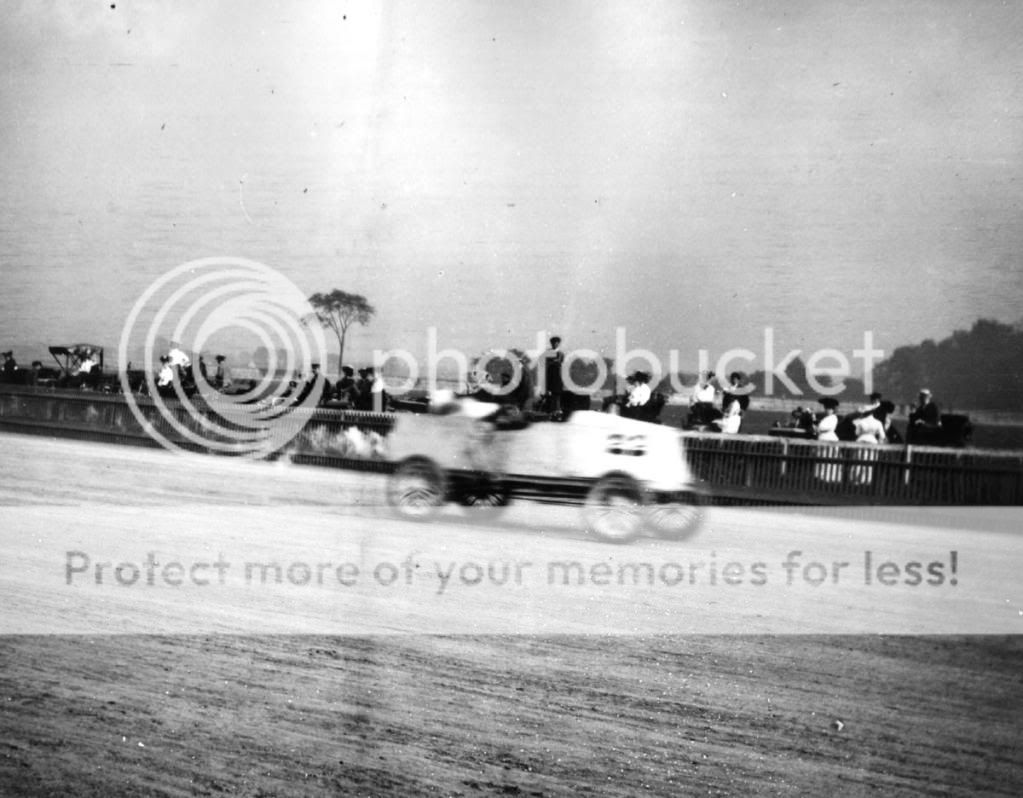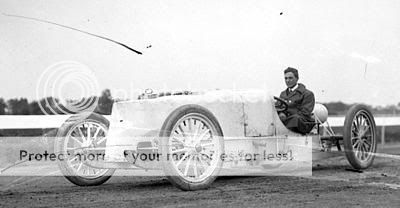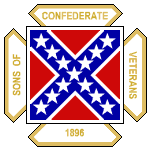
Where was the Glenville track located?
#1

Posted 05 June 2009 - 11:31
Advertisement
#2

Posted 05 June 2009 - 12:44
#3

Posted 05 June 2009 - 14:31
And here is a newspaper article about it as a pdf.
Just google it!
#4

Posted 05 June 2009 - 18:37
#6

Posted 06 June 2009 - 01:52
But historically speaking the track was in Glenville, a village at the far eastern edge of town, just past the Cleveland city limit. Just across St. Clair Avenue to the north was the Northern Ohio Fair Grounds, part of which is now Sam Miller Park (named for Sam Miller of Forest City Auto Parts). At one point in the distant past there was reportedly a passenger bridge over St. Clair Avenue connecting the track to the fair grounds. Known as the "Golden Oval," earlier in its history the Glenville Driving Track was one of the top facilities for trotters in the country.
Little more than a mile west of the track down St. Clair Ave (around 45th and Perkins) was the Winton factory, so naturally the track was often used for testing. The Winton Bullets ran here, among others. The New York Times pdf posted by Duc-man above (thanks, much appreciated) is very interesting in that the story prominently features Cleveland Mayor Tom Johnson... a bigger than life character in the mold of many big-city mayors of that era, and a huge booster of the automobile. He sped around the streets of Cleveland in his own 1902 Winton, known as the "Red Devil." Automobilists at that time were frequently harrassed by the police, with Johnson often interfering in their defense.
For a contemporary landmark, the site of the Glenville Driving Track is about 2.5 miles ENE of Burke Lakefront Airport, scene of many exciting CART/Champ Car races in recent times.
#7

Posted 06 June 2009 - 09:50
The track was just to the south of the aerial photo above, on the east side of the creek (Doan Brook) and on the south side of St. Clair Avenue. Some streets have moved and names have changed since then, but the current E. 93rd street (marked in the photo) would cut almost through the center of the track, which was oriented east/west. Where E. 93rd and Columbia St. intersect is pretty close to the center of the (former) infield. So if you google-map "Columbia and E.93rd street, Cleveland, Ohio," there you are.
But historically speaking the track was in Glenville, a village at the far eastern edge of town, just past the Cleveland city limit. Just across St. Clair Avenue to the north was the Northern Ohio Fair Grounds, part of which is now Sam Miller Park (named for Sam Miller of Forest City Auto Parts). At one point in the distant past there was reportedly a passenger bridge over St. Clair Avenue connecting the track to the fair grounds. Known as the "Golden Oval," earlier in its history the Glenville Driving Track was one of the top facilities for trotters in the country.
Little more than a mile west of the track down St. Clair Ave (around 45th and Perkins) was the Winton factory, so naturally the track was often used for testing. The Winton Bullets ran here, among others. The New York Times pdf posted by Duc-man above (thanks, much appreciated) is very interesting in that the story prominently features Cleveland Mayor Tom Johnson... a bigger than life character in the mold of many big-city mayors of that era, and a huge booster of the automobile. He sped around the streets of Cleveland in his own 1902 Winton, known as the "Red Devil." Automobilists at that time were frequently harrassed by the police, with Johnson often interfering in their defense.
For a contemporary landmark, the site of the Glenville Driving Track is about 2.5 miles ENE of Burke Lakefront Airport, scene of many exciting CART/Champ Car races in recent times.
Great directions for location and if looking "cross-eyed" you just might see either turn two and the backstretch or turn four and the front stretch in the upper right of the location provided. Off course I have had a beverage or two. The one mile length of the track also fits.
Henry

#8

Posted 06 June 2009 - 12:45
Edited by HDonaldCapps, 06 June 2009 - 12:46.
#9

Posted 07 June 2009 - 00:01
While I was researching the AAA's 1905 Motor Car Championship, I found that it was necessary to delve into the world of horse racing during the period, quickly being made aware that the horse racing world was composed of two segments, horse racing in the usual sense -- jockey on a saddle -- and harness racing -- driver on a silkie. The "Grand Circuit" for harness racing was huge in the East and the Midwest. Indeed, the term "grand circuit" was used quite often when referring to the AAA series of events. Keep in mind that it was at Glenville in 1905 (12 August) that Earl Kiser in the Winton Bullet had a horrific accident that resulted in the lost of his left leg. Webb Jay won the championship event and Oldfield (in bandages) made an appearance in the Green Dragon after his wreck at Grosse Point.
Don, I wonder if the people living on top of the track know any of this..................................Sad!
Henry
#10

Posted 07 June 2009 - 02:29
Perhaps someone in the local history department at Western Reserve University is aware of Glenville or should be made so. After all, the annual concours d'elegance there does attract many great cars.
Frank
#11

Posted 09 June 2009 - 05:01
Or it could be the 'Turtle' - it's a bit hard to tell. Barney Oldfield won the open 1mile and 5 mile events, 5:23 for the 5 miles. J.L. Hedges broke the steam car records with a 6:07 2/5's for the 5 miles in the White racer.


#12

Posted 09 June 2009 - 12:33
E. 93rd Street does not go all the way through (didn't then, doesn't now) but three miles due south of the Glenville track on E. 93rd was the Peerless plant, at the corner of Quincy and E. 93rd. Its original location was on what is now Lisbon Street, around 800 feet southwest on the New York Central rail -- the new plant was begun in right around 1905. Peerless Green Dragon, Barney Oldfield and all that, and of course one of the three P's: Packard, Pierce Arrow, and Peerless.
The original White factory (sewing machines etc) was in the center of town near what is now known as The Flats. However, the White auto division soon (c. 1905) moved into a plant at St. Clair and 79th street, only a half-mile west of the Glenville track -- basically, just on the other side of the creek. This would be the final Cleveland home of White Motor, which built trucks for decades and finally kicked the bucket in the early '80s.
The history of Cleveland in this period is fun to research as one day in July 1906 all the street names were changed. The current number system for North/South streets was adopted and a number of other street names were changed as well. For example, the east/west street just north of the Glenville track was Harvard St. pre-1906 and Yale St post-1906... probably to eliminate a conflict with another Harvard St., I'm guessing. (Or maybe some city planner was a Yale man.) Meanwhile, E. 93rd in this area was Parks St below St. Clair and Houghton above St. Clair. Waterways and railroads are valuable landmarks... the course of a stream can be altered but not as often as a street, while a rail right of way is forever, more or less.
Below, the Glenville Driving Track in 1898 (first map) and in 1908. Glenville was annexed to Cleveland during this period; note the residential streets encroaching all around. In the next map I could find (1918) the track is gone, replaced by city blocks.


#13

Posted 09 June 2009 - 22:44
First, let me say how I much I enjoy and appreciate the opportunity to learn and share in this forum -- thank you all.
E. 93rd Street does not go all the way through (didn't then, doesn't now) but three miles due south of the Glenville track on E. 93rd was the Peerless plant, at the corner of Quincy and E. 93rd. Its original location was on what is now Lisbon Street, around 800 feet southwest on the New York Central rail -- the new plant was begun in right around 1905. Peerless Green Dragon, Barney Oldfield and all that, and of course one of the three P's: Packard, Pierce Arrow, and Peerless.
The original White factory (sewing machines etc) was in the center of town near what is now known as The Flats. However, the White auto division soon (c. 1905) moved into a plant at St. Clair and 79th street, only a half-mile west of the Glenville track -- basically, just on the other side of the creek. This would be the final Cleveland home of White Motor, which built trucks for decades and finally kicked the bucket in the early '80s.
The history of Cleveland in this period is fun to research as one day in July 1906 all the street names were changed. The current number system for North/South streets was adopted and a number of other street names were changed as well. For example, the east/west street just north of the Glenville track was Harvard St. pre-1906 and Yale St post-1906... probably to eliminate a conflict with another Harvard St., I'm guessing. (Or maybe some city planner was a Yale man.) Meanwhile, E. 93rd in this area was Parks St below St. Clair and Houghton above St. Clair. Waterways and railroads are valuable landmarks... the course of a stream can be altered but not as often as a street, while a rail right of way is forever, more or less.
Below, the Glenville Driving Track in 1898 (first map) and in 1908. Glenville was annexed to Cleveland during this period; note the residential streets encroaching all around. In the next map I could find (1918) the track is gone, replaced by city blocks.
Wonderful research! Thanks so much for sharing.
Henry
#14

Posted 10 June 2009 - 03:35

Edited by leestohr, 10 June 2009 - 03:45.















